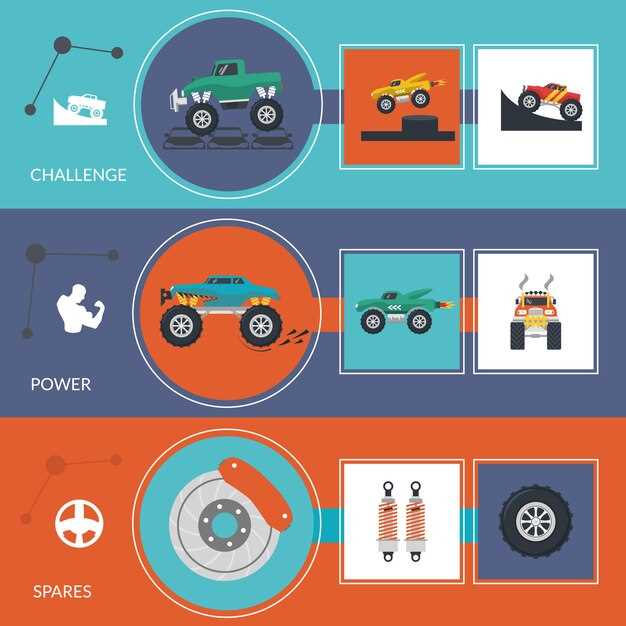
The suspension setup of a race car plays a critical role in determining its performance on different track types. Each track presents unique challenges, from uneven surfaces to varying corner radii, requiring specific adjustments to suspension components. Understanding how to optimize these settings can mean the difference between a competitive lap time and a costly mistake.
Track types, such as road courses, ovals, and street circuits, have distinct characteristics that influence the way suspension should be configured. For instance, a road course typically demands a setup that emphasizes cornering stability and traction, whereas an oval track often prioritizes aerodynamic efficiency and consistent handling at high speeds. Through meticulous calibration of suspension settings, drivers can harness the full potential of their vehicles and adapt to each layout.
In this article, we will delve into the specifics of suspension setups tailored for various track conditions. We will discuss key components such as shock absorbers, springs, and anti-roll bars, exploring how adjustments in these areas can enhance performance. Whether you are an amateur racer or a seasoned professional, understanding suspension dynamics is essential for achieving optimal lap times across diverse racing environments.
Adjusting Suspension for Asphalt Tracks: Key Considerations

When it comes to optimizing suspension setup for asphalt tracks, several critical factors must be considered to enhance performance and achieve a competitive edge. The primary objective is to ensure maximum grip while maintaining vehicle stability throughout corners and during acceleration.
Firstly, shock absorber settings play a vital role in determining how the car interacts with the asphalt surface. Softer settings increase grip by allowing the tires to conform more to the track, while stiffer settings provide better control and reduce body roll, especially in high-speed corners. Finding the right balance between these two extremes is crucial for achieving optimal performance.
Next, ride height significantly influences aerodynamics and weight distribution. Lowering the ride height can reduce aerodynamic drag and improve handling by lowering the center of gravity. However, it is essential to ensure that the vehicle does not bottom out, which can lead to loss of control. Adjustments should focus on maintaining a sensible ride height that suits the specific asphalt track being navigated.
Spring rates also require careful attention. On smoother asphalt tracks, softer springs may be beneficial for maintaining tire contact and promoting better grip. Conversely, on tracks with rougher surfaces or more elevation changes, stiffer springs can help keep the car settled and enhance responsiveness during dynamic maneuvers.
The alignment settings, including camber and toe angles, are key contributors to tire performance on asphalt. Adjusting camber to enhance tire contact patch during cornering will improve traction. Meanwhile, the toe settings must be optimized to ensure responsiveness without sacrificing straight-line stability.
Finally, consider the type of asphalt surface and its characteristics. Some tracks may have varying grip levels due to weather conditions or surface wear. Regularly assessing the surface and adjusting the suspension setup accordingly can yield significant performance improvements.
Optimizing Off-Road Suspension: Key Differences and Techniques

Off-road suspension systems are specifically designed to handle the unique challenges of rough terrains. Unlike standard road suspension, off-road setups require a focus on durability, flexibility, and the ability to absorb shocks from various obstacles. Key differences include the amount of travel, stiffness of springs, and damping characteristics.
One of the crucial aspects of optimizing off-road suspension is increasing wheel travel. More wheel travel allows the vehicle to maintain better contact with the ground over uneven surfaces, enhancing traction. This can be achieved through longer shocks and carefully selected coil springs. It’s important to balance travel with stability; extreme lengths can lead to body roll and affect handling.
Another key consideration is spring rates. Off-road vehicles typically benefit from softer springs that can compress more easily over bumps and dips. However, it’s essential to strike a balance; overly soft springs might cause bottoming out on larger obstacles. Adjusting the preload on the springs can also help fine-tune the ride height and comfort level.
Damping is equally important in an off-road suspension setup. Innovative twin-tube or monotube shock absorbers offer improved performance over rugged terrains. Adjustable damping features allow drivers to fine-tune their ride depending on the conditions, providing either a compliant ride for softer terrains or firmer setups for rocky paths.
Additionally, anti-roll bars can assist in controlling body sway during cornering. While these bars are often used on-road, their application in off-road settings can enhance stability when traversing uneven surfaces. However, flexibility in design is vital, as too rigid an anti-roll bar could limit wheel articulation.
Finally, tire selection plays a significant role in suspension optimization. Larger tires can provide better clearance and a larger contact patch, enhancing overall traction. Pairing the right tire with the suspension system is essential to maximize performance across various off-road conditions.
Tuning Suspension for Mixed Surface Tracks: Best Practices
Tuning the suspension for mixed surface tracks presents unique challenges due to the varying grip levels and terrain characteristics. An effective setup is crucial for maximizing performance and ensuring driver confidence. Here are some best practices for achieving optimal suspension tuning in these conditions.
1. Assess Track Conditions: Before making adjustments, evaluate the specific sections of the track. Mixed surface tracks may include asphalt, gravel, and dirt, each requiring different suspension responses. Take note of any rough patches or smooth stretches to inform your setup decisions.
2. Adjustable Dampers: Utilize adjustable dampers to fine-tune your suspension. Softer settings can be beneficial for loose surfaces, providing more wheel travel and better traction. Conversely, firmer settings may be advantageous for asphalt sections to reduce body roll and improve stability.
3. Ride Height and Ground Clearance: Optimize ride height to accommodate the varying surfaces. A higher ride height may be advantageous for rough gravel or dirt sections, while a lower ride height can enhance aerodynamics on asphalt. Strive for a balance that allows for effective navigation of both track types.
4. Spring Rates: Choose spring rates that cater to mixed conditions by focusing on a compromise between comfort and performance. Consider using softer springs for dirt and stiffer ones for asphalt, if your setup allows for quick adjustments during the event.
5. Tire Selection: Tires play a crucial role in suspension performance. Select a versatile tire that offers good grip on both surfaces. Pay attention to tire pressure adjustments as well, as higher pressures can reduce grip on softer surfaces, while lower pressures may help increase traction.
6. Testing and Feedback: Conduct thorough testing sessions to refine your setup. Pay attention to driver feedback regarding handling, traction, and stability. Use this input to make necessary tweaks to the suspension settings before the main event.
7. Data Logging: Implement data logging systems to gather information on suspension performance. Analyzing data such as wheel travel, ride height, and damping forces can provide insights into how your setup is performing across different track sections.
By adhering to these best practices, you can effectively tune your suspension for mixed surface tracks. This approach will enhance vehicle performance and contribute to a more enjoyable driving experience.
